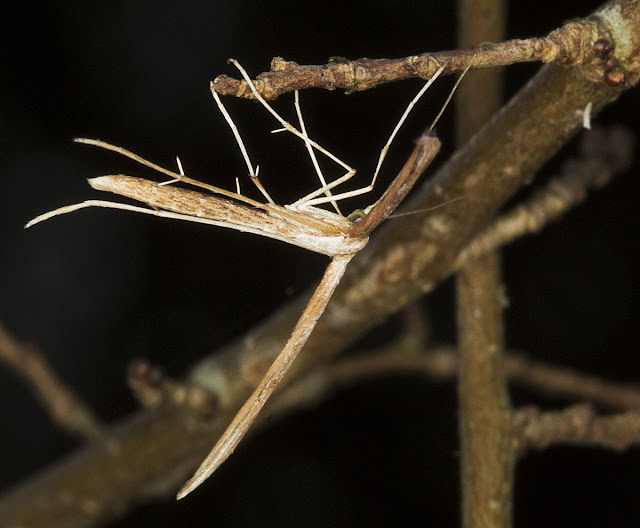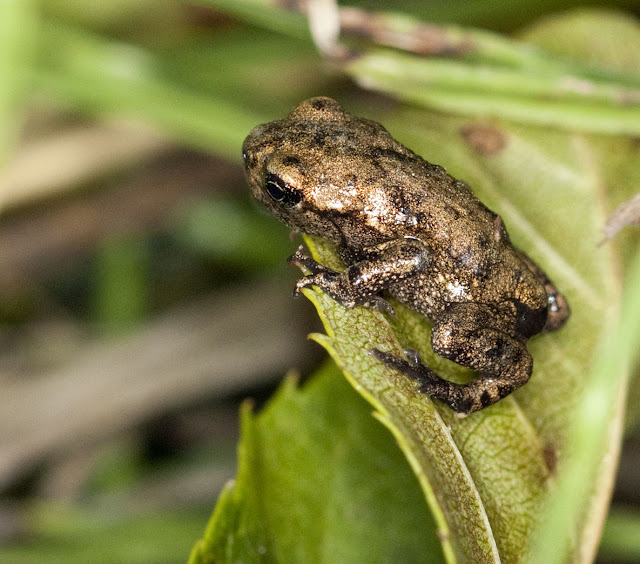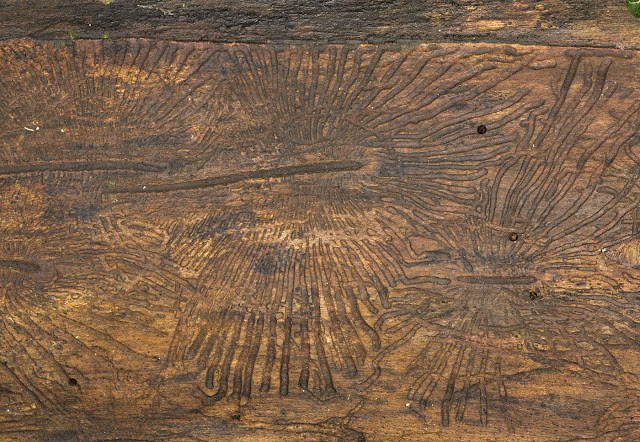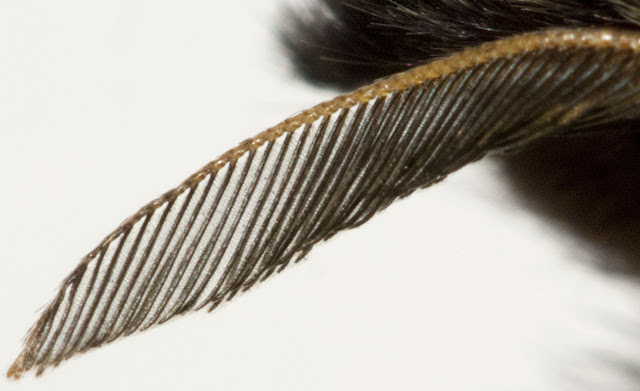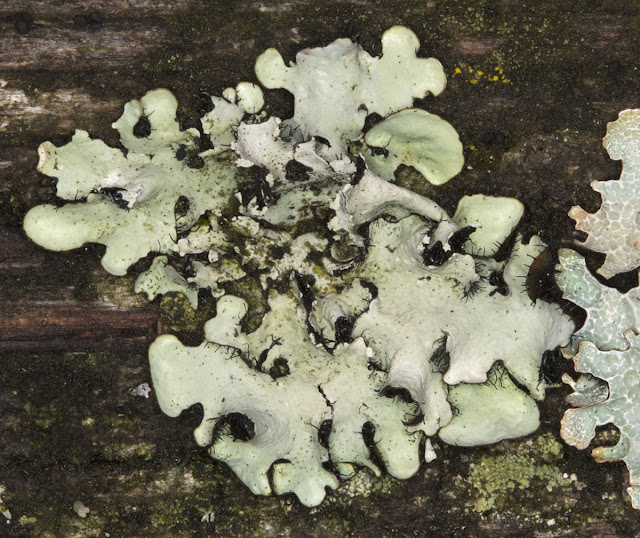 |
| Strange growth on a Silver Birch. Lullingstone Country Park, 31 December 2011. |
On the last day of 2011 the Orpington Field Club walked around Lullingstone Country Park. It didn't rain, which pleased us all.
I wondered what we might see at that time of year. It has been unusually mild, but even so, it was the middle of winter. And mild weather works both ways. The bird-watchers among us could normally expect to see winter migrants, but there were few signs of them this year.
We actually found half a dozen plants flowering around the edges of the car park, some quite pretty; Common Field Speedwell, Scentless Mayweed, Groundsel, the indefatigable Annual Meadow Grass. And this Wild Carrot was flowering way out of season; out in the fields there were only the dried flower-heads of the summer's growth.
 |
| Wild Carrot, Daucus carota ssp. carota. Lullingstone Country Park, 31 December 2011. |
I am showing the fresh leafy growth and a large bud; there were open flowers elsewhere. Out in the fields we only found two other plants in flower, both looking lonely; a Common Ragwort and a Yarrow. Once we reached the woods, though, there were many interesting sights, including ancient trees and fungi. I thought that this spectacular oak, still very alive in part, looked 1,000 years old, but web sources suggest that 700 years might be a better estimate.
 |
| Ancient oak tree. Lullingstone Country Park, 31 December 2011. |
The odd growth on a Silver Birch shown at the top puzzled us; to the eye it might have been a squirrel's drey, except there was nothing to support it. I think it is a large burr or outgrowth, perhaps caused by an infection or a parasite.
It was good to find a nice fresh specimen of this next item, a gelatinous
fungus called Jelly Ear. Perhaps you can guess from its scientific name what it used to be called. It is quite common on old Elders.
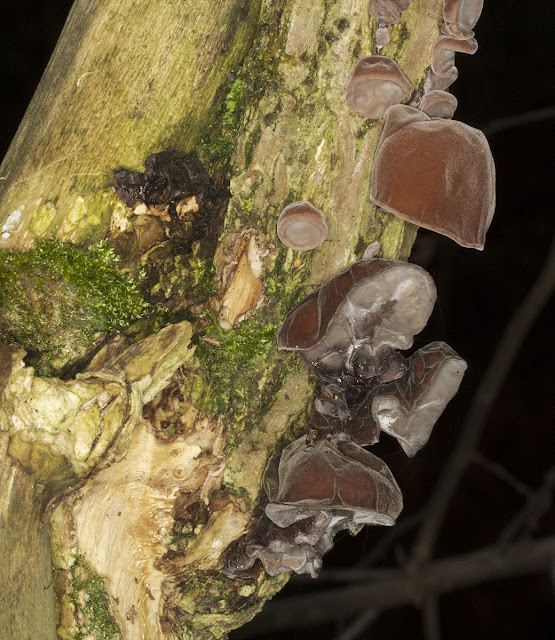 |
| Jelly Ear, Auricularia auricula-judae. Lullingstone Country Park, 31 December 2011. |
Here's another sight that we puzzled over. There was a whole grove of trees with lighter lines snaking up their trunks. It seems likely that this is where snails, or perhaps slugs, have climbed the tree and grazed on the algae growing on the bark.
 |
| Strange marks on trees. Slugs or snails grazing on algae? Lullingstone Country Park, 31 December 2011. |
I have some photos of fungi, lichens and moss from this trip that I will post next time.








